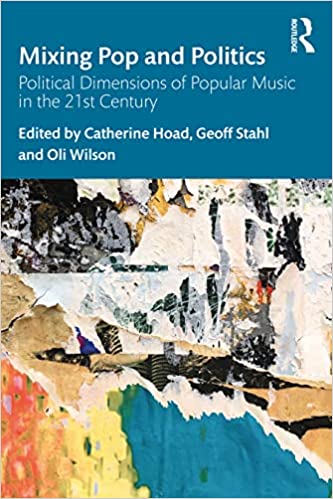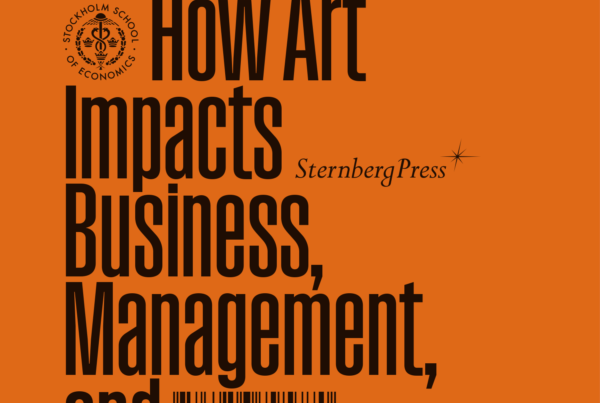
Since the outbreak of the covid-19 pandemic worldwide in early 2020, global music industries have been severely threatened by regional and international lockdown policies. Live music performances had stopped, music productions came to a halt, funding was cut, media exposure and promotion in the traditional sense became impossible, and music and related industries were in general greatly undermined. In the meantime, however, music became unprecedentedly significant to us, in helping with coping with the reality of being trapped, stuck, and isolated during the pandemic. DJ turned to the digital world, pop music concerts scattered online, and a poignant image of the power of music in lockdown went viral: Italian musicians playing and singing music from their balconies as a way to create a moment of joy in a time of mass anxiety. Consequently, a line of scholarships emerged beginning to look at the role of music, specifically pop music, during the pandemic. How music production and dissemination were shaken, and while music is valued more than ever, in the time of COVID -19. Whilst pop music, as its namesake, is firmly rooted in the popular and is engineered for mainstream popularity, pop music studies must actively be engaged in our concrete realities and daily struggles. As Martin Cloonan stated, pop music is overtly political (p. 216).
In light of these shifting global flow, studies start to re-address a longstanding question: what does the future of music look like? Catherine Hoad, and Geoff Stahl, together with Oli Wilson edited the collection Mixing Pop and Politics, not only to unfold the future of music temporarily but go beyond the idea and futurity of pop music amid the shifting social-political paradigms of power in the neoliberalist world. Instead of questioning the future of music, this collection is bringing us to explore the potential changes of the future initiated by pop music.
Looking at the list of collected research that include chapters focusing of neoliberal city, neoliberal authoritarian and many more, one can notice how neoliberalism is a key subject shared by many contributors of the book. These research are connected, if not united, in their attempts to unfold the problematics of the neoliberalist regimes before the emergence of COVID. Neoliberal governmentality, Michel Foucault argued, is being structured around the shift from external institutionalized modes of disciplining to individual self-disciplining processes of subjects. It generates various kinds of neoliberal dominations and exploitations. In this collection, the problems covered include neoliberal-authoritarian regime, economic crisis, racism, post-feminism, climate change politics, alienation, and more. It shows its ambition to move beyond Martin Cloonan’s call that popular music studies ‘should challenge existing industry practices and organizations’ (2005).
With this ambition, this collection showcases pop music’s many intersections with politics and covers a wide range of international contexts. Apart from those inevitably white-centric localities such as New Zealand, and Sweden, the spectrum of localities was broadened up with research on South Africa, Turkey, South Korea, and more. The diversity of localities invites us to re-imagine popular music studies outside the Eurocentric mainstream canon. Markedly, the re-imagination is not merely happening geographically, but also built around notions of minorities and majorities. For instance, themes of sex and sexualities are highlighted, and various emerging niche genres including vaporwave, trap hop, and feminist punk were covered. As Head et al. stated, “we have been challenged to critically re-imagine the field through both epistemological and material processes of decolonization and diversification” (p.2).
Though the relationship between music and politics is an area of considerable debate in which no consensus has yet emerged, it is difficult to deny the inseparable relationship between these two entities (Hesmondhalgh and Negus 2002, p.7). The diversity offered by this collection highlights various kinds of connections and dynamics, “mixings”, in its own words, pop and politics. Building around the context of neoliberalist governmentality, it demonstrates how pop music played as form of pragmatic politics to confront, negotiate, or even be incorporated into governmental power. As a succinct yet very readable book, it consists of seventeen interwoven chapters. Some of them were deftly approaching themes in threefold, explicating themes with their facets of resistance, negotiation, and coalescence. Authoritarian regimes, and sexualities, mainly feminism, which are highly researched in pop music studies, are two major themes explicated in this collection. Apart from enriching the research field, the texts themselves offer poignant critiques of the neoliberalist practices in pop music nowadays.
Reassuring the potential of resistance to pop music, Gulum Sener timely captures the rise of local rap in Turkey and examines how the counter-hegemonic discourses articulated in Turkish rap lyrics pave the way for the rise of rap songs in the Turkish music market. The chapter is timely written right after the release of the Turkish rap Susamam (I Can’t Stay Silent), which went viral on YouTube in 2019. Starting with Susamam, Sener’s investigation on the contemporary Turkish music trend shows the musicians’ pragmatic politics of seeing rap as activism, to criticize the neoliberal Islamist policies, including class difference under a new Islamic conservative bourgeoise, the privatization of government services, poverty, and crime in “New Turkey”. It shows how the accumulated repressed feelings of the people and the rap song culture assisted each other under Turkey’s oppressive AKP’s neoliberal-authoritarian regime. Further, it also reveals how the African Americans hip-hop culture with its resistance potential is being localized in the Turkish socio-political context.
Contrarily, also putting the focus on hip-hop culture, Jeeyun Sophia Baik unravels the coalescence between hip-hop culture and state-led ideological work in South Korea by examining a concert The Great Legacy: History X Hip Hop. Instead of playing it as a clear bottom-up resistance from youth culture, hip-hop in this case is sanitized as a cultural medium of propaganda by the state. The writer locates the concert within the larger political context of South Korea, detailing how the series of happenings, beginning with the 2016 political scandals, and later the nationwide anti-Geun-Hye Park protests, shapes the meaning of the concert. With the examination of The Great Legacy, Baik complicated the praxis of resistance to rap music. In her analysis, the concert raps were produced as counter-narratives to the political chaos conveyed nostalgic values and served to reinforce resilience. Meanwhile, a sense of patriotism is paradoxically facilitated by those songs with narratives based on South Korea’s national history. Though Baik merely unfolds the positive impact of framing rap music with history celebratorily there, one could still see clues of how rap music in this instance was engineered to mold audiences as a nationalistic subject within a critical framework.
To accomplish the threefold investigation, Eduardo Barros-Grela’s chapter reveals one key problem of how music politics would inevitably be incorporated into the neoliberalist system when musicians are involved as entrepreneurs of their own existence. Chasing the image of Spanish trap artist Yung Beef, Barros-Grela gives his interpretation of current Spanish trap music and its political implications. Echoing the claim that trap music is the soundtrack of the economic crisis in Spain, Yung Beef was originally a figure embodying grassroots anti-establishment sentiments, calling out on the real-estate crisis in Spain. However, Barro-Grela points out one of the disappointing facets of pop music that we could not overlook—the cross-media commercial relationships benefitting the neoliberalist market. Like many mainstream musicians, Yung Beef ended up contradicting his commitment to marginal communities with his economic prosperity, which came as a shock to his audience.
With the three chapters mentioned, this collection exposes the dilemmas of pop music’s intersections with politics. Though it shows how pop music is practiced as resistance and protest of different forms of governance, still it could not totally steer away from the neoliberal and conservative undercurrents.
Continuing lines of scholarship on neoliberalism, the collection points out how sexuality remains a crucial construct that renders subjects governable. Feminism is emphatically discussed in the collection, however, rather than echoing the diversity of sexualities studies, regrettably, the LGBTQ lens is missing from the collection. Regarding whether music can be a political tool for women to express their experiences, languages, and identities, or in general self-determination, Saesha Senge’s research in this collection markedly unmasks the post-feminist problematics in pop music studies. The features of post-feminism echoed some tenets of neoliberalism—the dismissal of responsibility of institutional force and the emergence of individual exploitation. Taking into consideration the continual appeal of the early 1990s pop vocal group Wilson Philip, Saesha Senger examines postfeminist and anti-victim ideologies hidden in two of their hit songs Hold On and Release Me. Her research strikingly shows how the conservatism appearing in 1990s pop music still resonates in the 21st century.
Nevertheless, reducing resilience to a neoliberal product provides an incomplete and biased understanding of the context of world politics. Though pop music industries worldwide are still dominated by heterosexual hegemonic narratives, or mostly patriarchal, it is essential to continue to explore the more hopeful parts—the possibilities of true resistance. This collection includes the research by Katelyn Barney and Lexine Solomons, pointing out how lyrics act as a statement of survival despite colonization among a group of Aboriginal and Torres Strait Islander women. Pop music offers a channel for indigenous women to have their voices heard. The songs in the Bundjalung Aboriginal language help to safe keep the language against colonization and remains a sign of resilience despite the violence, abuses, and other trauma they were suffering as indigenous people, and as women. In the case of a group of musical artists in North Queensland, music performances constructed a site for intercultural collaboration, language revitalization, resilience, and resistance for people from different regions.
Finally, the collection problematized the role of pop music in politics. In the chapter by Ann Werner in the later part of the collection, the limits of the political potency of messages of feminism and anti-racism in mainstream pop music were underscored. Contextualizing the image of black Swedish artist Titiyo within the Swedish mainstream music scene, the chapter shows the challenges and possible failure of articulating feminist and anti-racial politics with pop music. Further, within the neoliberalist market, the singer’s image is easily appropriated by postfeminism, rendering it unchallenging to persisting inequalities. Werner’s research poses a significant question on the obstacles of mixing pop music with politics within the mainstream capitalist postfeminist media. Besides, instead of seeing the postfeminist incorporation as a failure in politics, how the apolitical pop music still engages popularities politically as effective solidarity.
Apart from the above-mentioned chapters, the collection includes other research on intersectional subjects that rarely appear in the field. Paige Klimentou’s chapter talks about the bodily politics of tattooing in relation to popular music fandom; Ian Collinson explores how Eco metal makes transgression to misanthropic environmentalism, environmental activism without politics, and emasculated environmentalism. Mixing Pop and Politics—drawing from a diverse base of disciplines and fields of study, namely pop music, neoliberalism, racism, feminism, environmentalism, body politics, and many more—touches upon many facets of pop music. The collection delineates different forms of the resilience in pop music in its connection to authoritarianism. On one hand, it shows how politics can go from the realm of activism into the realm of popular music; on the other hand, it accurately reveals how pop music is bouncing back and forth between the sides of resistance and coalescence of the neoliberal paradigm, creating, and occupying a liminal space. To be hypercritical, whilst the responses to the question of the role of music in politics are scattered in numerous genres and contexts in this collection, there are much room left to be further researched. As it happens that the collection is timely published in this post-COVID time, it remains a recommendable collection of preliminary studies that showcase pop music’s many interventions in the neoliberalist system that is already shaky before COVID-19, and its presumably regular state being fundamentally disrupted by the pandemic. With pop music unmasking the unsustainability of the neoliberal system, the collection offers us focal points to foresee how the “mixing” of pop music and politics continues to challenge, and potentially facilitate imaginations of a “new normal”.






